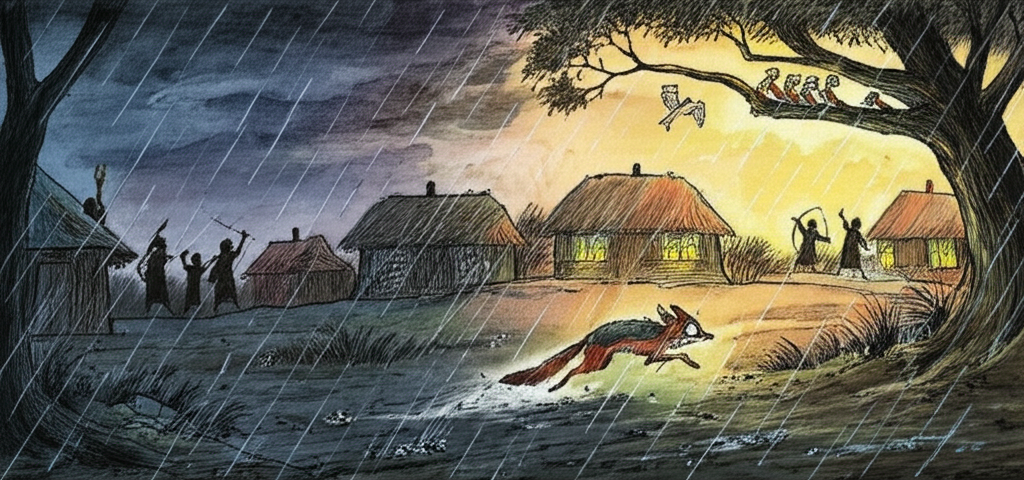Once upon a time, there was a jackal and a kite. They lived in the same tree. The jackal lived at the bottom, and the kite lived at the top. Neither of them had any kids. One day, the kite said to the jackal, “Let’s pray to God and not eat anything for a while. Maybe then He will give us children!” The jackal said, “Okay, good idea!” That day, the kite didn’t eat anything, not even that night. But the jackal waited until night, then secretly brought a dead animal and ate it under the tree. Crunch, crunch, crunch! The kite heard her munching on the bones instead of not eating. “What’s that you’ve got there?” the kite asked. “Why are you making so much noise?” “Oh, it’s nothing,” said the jackal. “It’s just my own bones rattling around inside me when I move!” The kite went back to sleep and didn’t pay attention to the jackal. The next morning, the kite ate a little food to honor God. That night, the jackal brought another dead animal. The kite called out, “What are you crunching? Why are you making that noise? I bet you’re eating something!” The jackal said, “Oh no! It’s just my bones rattling!” So the kite went back to sleep.
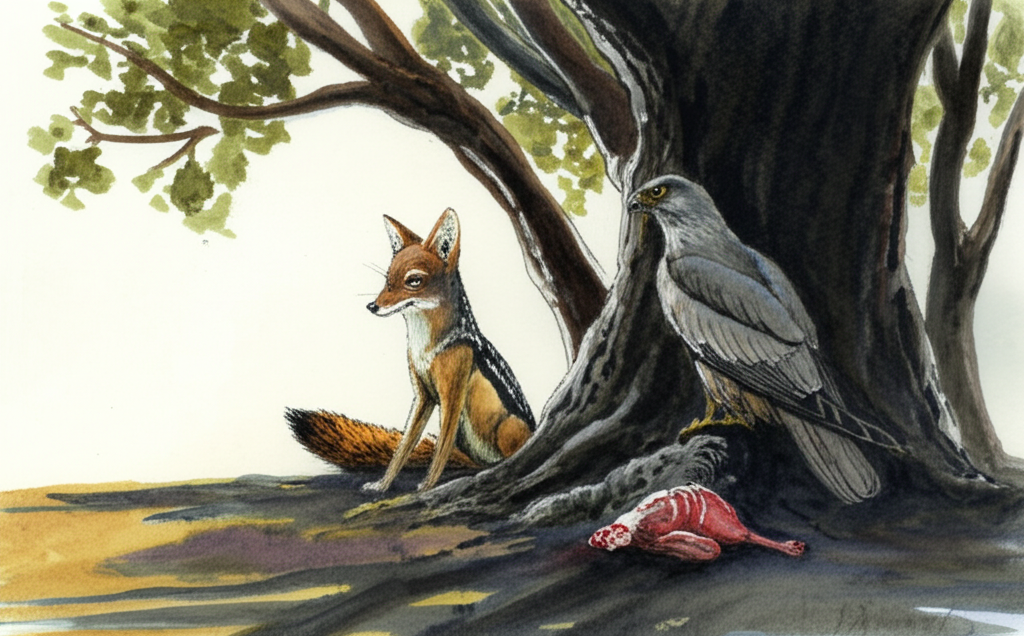
Later, the kite had seven little boys! But the jackal had no children because she didn’t really fast. A year later, the kite prayed to God again, asking Him to watch over her children.
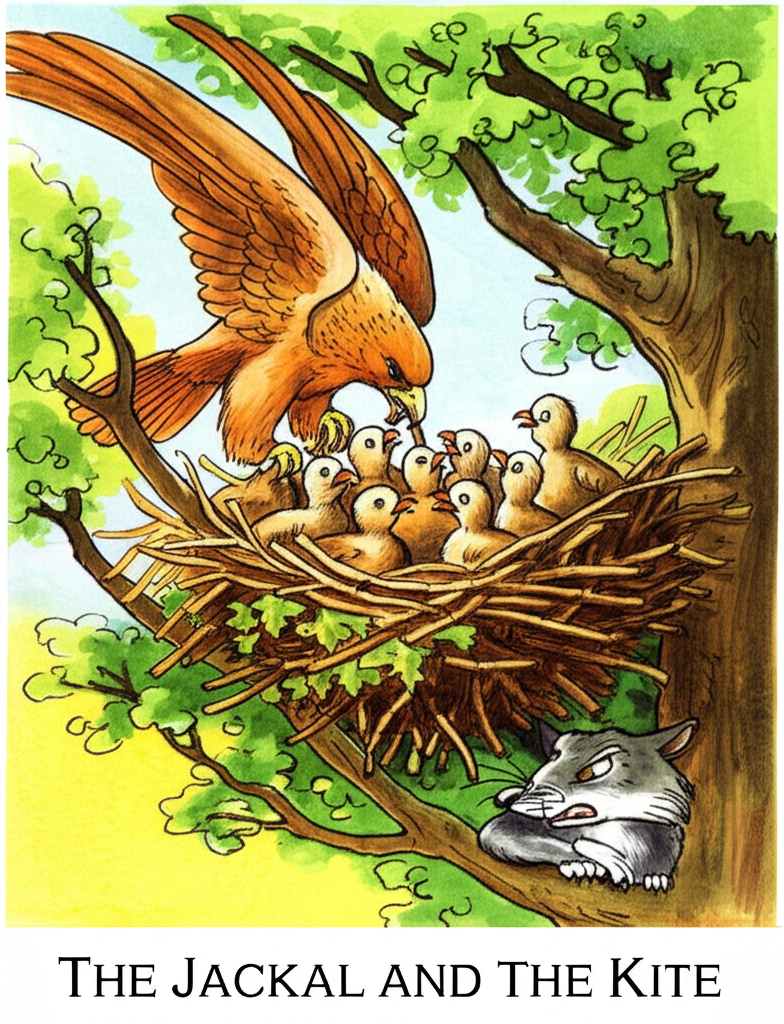
One day, which was a special day, the kite put out seven plates. On one plate, she put coconuts, on another cucumbers, on a third rice, on a fourth bananas, and so on. Then she gave a plate to each of her seven sons and told them to take the plates to their aunt the jackal. So the boys took the seven plates and carried them to their aunt, calling out, “Aunty, aunty, look! Mom sent you these!” The jackal took the plates… but instead of being nice, she did something terrible! She chopped off the heads, hands, feet, noses, and ears of the seven boys, and took out their eyes. Then she put all the heads on one plate, the eyes on another, the noses on a third, the ears on a fourth, the hands on a fifth, the feet on a sixth, and the rest of their bodies on the seventh. Then she covered all the plates. She took the plates to the kite and called out, “Here! I brought you something back! You sent me a present, so I’m giving you one too!”
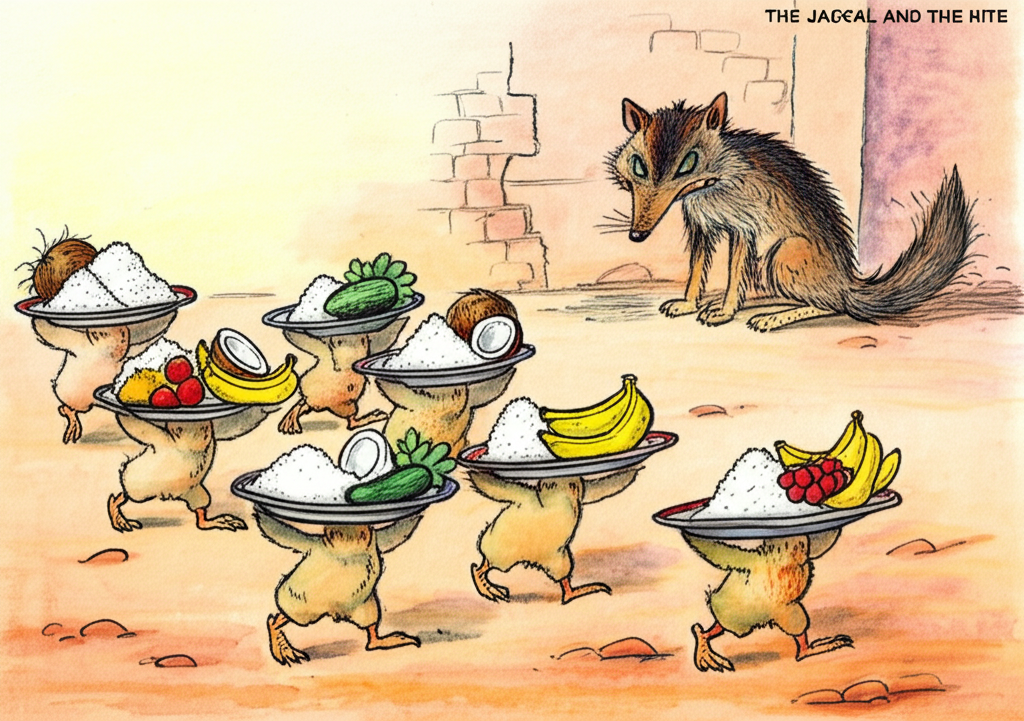
The poor kite thought the jackal had hurt her seven children, so she cried out, “Oh no! It’s too dark to see what you’ve brought. Just put the plates down in my tree.” The jackal put the plates down and went home.
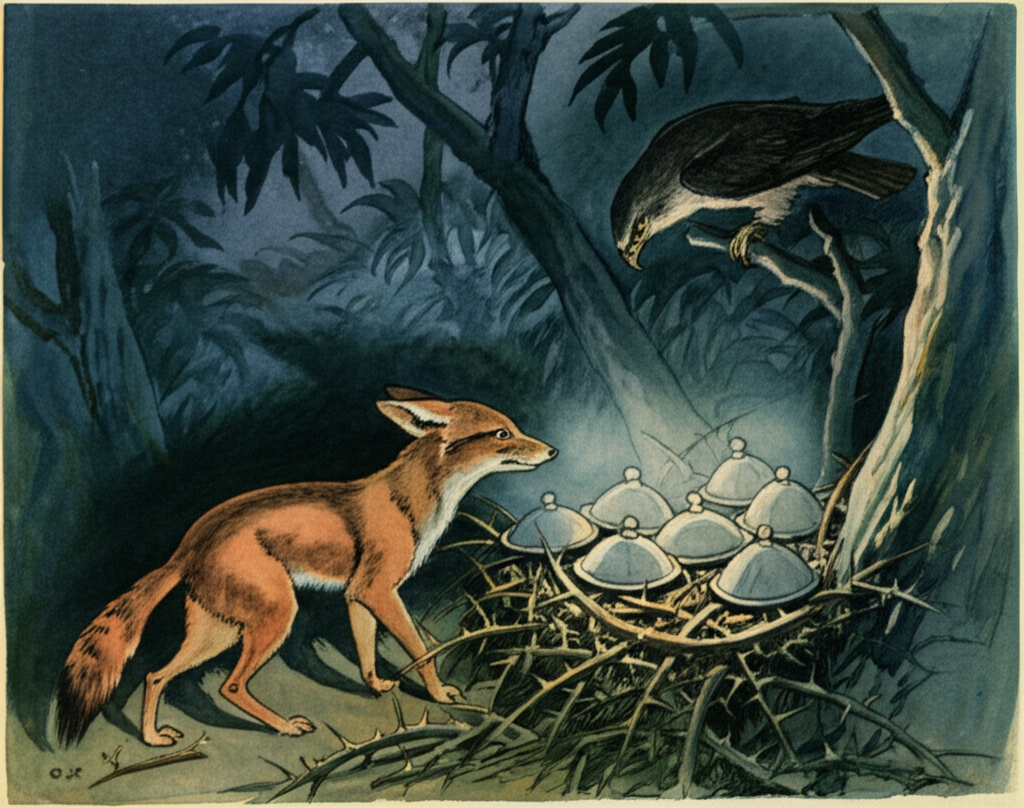
Then, God brought the boys back to life! They came running to their mother, all happy and well. And instead of heads, eyes, noses, ears, hands, feet, and bodies, the plates were filled with coconuts, cucumbers, bananas, rice, and all the yummy things again!
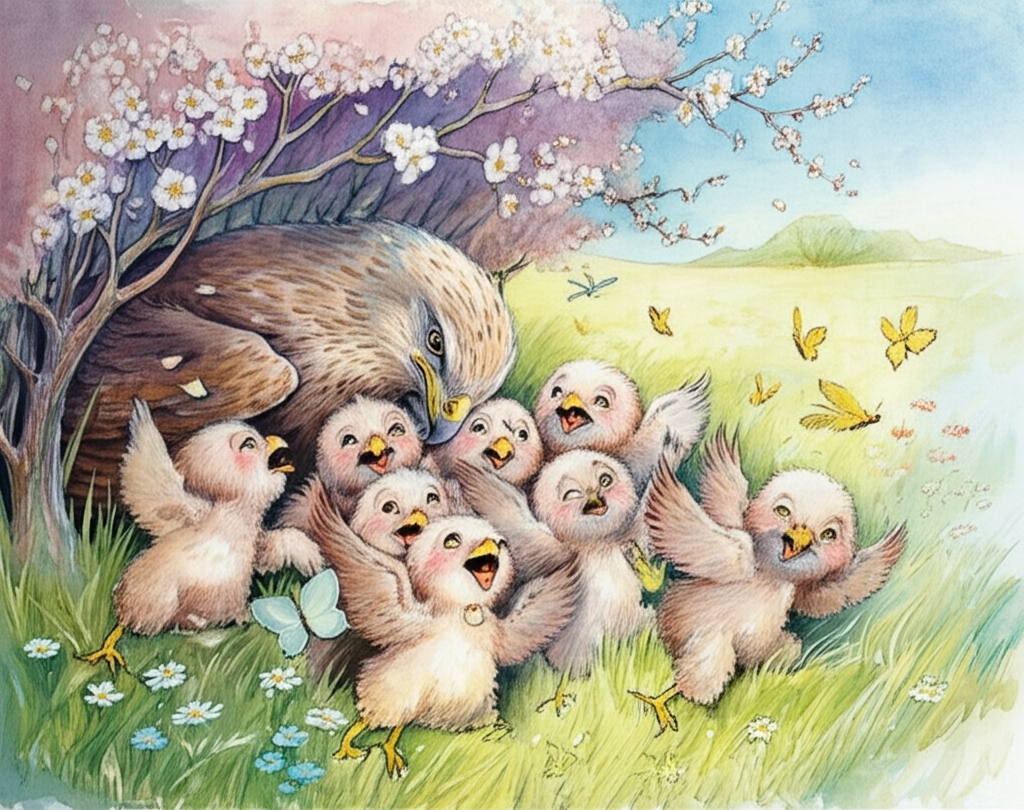
The jackal got hold of the boys again! This time, she did it again! But God brought them back to life again. The jackal was really surprised to see the boys alive. She got angry and said to the kite, “I’m going to take your seven sons and throw them into the water, and they will drown!” “Okay,” said the kite. “Take them. I don’t mind. God will take care of them.” The jackal took them and threw them into the water, and left them there. But the kite watched without crying. And again, God made them alive! The jackal was so surprised. “How is this possible?” she said. “I put these children in the water to drown, and here they are, alive!”
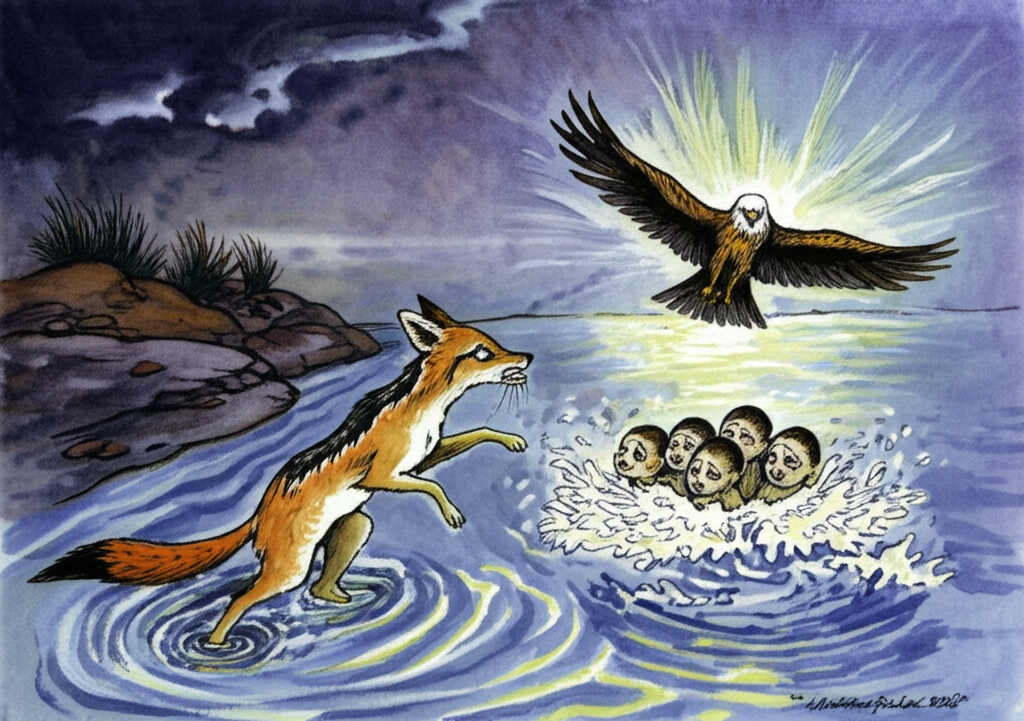
Then God got very angry with the jackal and said to her, “Go away from this village! Wherever you go, people will try to shoot you, and you will always be afraid of them!” So the jackal had to leave. The kite and her children lived very happily ever after!
